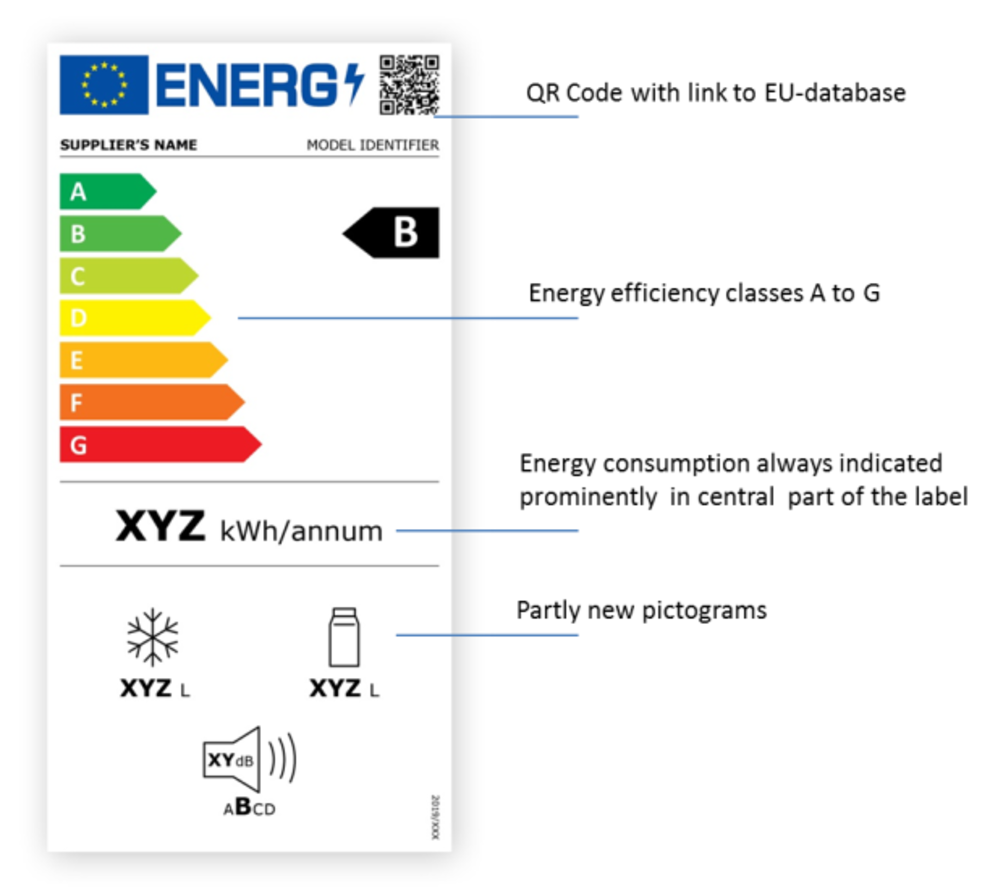Main features of the new energy label
What are the main differences between the old and new label?
- The new label uses a uniform A-G scale for all products. A+++/A+ will no longer exist
- In the upper right corner of the label a QR-Code is introduced which will provide a direct link to the label database of the European Commission supporting transparency and easier market surveillance by national authorities
- The energy consumption of the products is shown in a more prominent and uniform way in the middle section of the label
- The lower part of the label contains various pictograms which inform about selected product features. Several pictograms are the same as in the old label, some have been revised and a few have been newly introduced

What else is to be considered for the new labels?
Pictograms
- The majority of pictograms from the old label will also be used in the new version. However some pictograms were slightly adapted and a few were newly introduced (e.g. energy efficiency in HDR-Mode for TVs and displays, washing time for washing machines)
EU-product database and QR-Code
By law all energy labelled products shall be registered in the new EU-product database (EPREL) by manufacturers/suppliers. The database provides additional product information not included on the label and is divided into two sections for different target groups:
- Section for market surveillance: This section is only accessible for market surveillance authorities. The data included here is mainly intended to support and facilitate market surveillance activities.
- Section for consumers, professional buyers, retailers and other users: The public section is expected to be available from summer 2020 onwards. Until March 2021 product data related to the old (current) label will be provided. Data for the new label will be accessible from March 2021 onwards.
Information in the product database will be accessible directly via the EU website and via a QR-Code included in the labels. App-software, currently developed by independent organisations will allow comparison of product data and cost calculations.
